Text
WEEK HEXACHLOROCYCLOHEXANE
{Feb 26th ~ Mar 3rd}
And here we are relating the sixth week of my venturing — time will tell if I will catch up to the present before I get back to the southern hemisphere. This week began with a frightening and histrionic email from an authority figure in our accomodations, fuming that all the flats in our building had been writing in whiteboard marker on our brand new fridges, and as such, “if [she] sees even a smudge of ink left, [we] will be charged for new appliances.”[1] Suffice it to say, the email was so aggressive, that we were shocked into submission, and have only drawn on the fridges a tiny bit since. But we have been decorating with magnets.
I went again to Magdalen college chapel with my flatmate to attend a classical organ recital, which was full of drama and wonder and excitement and fantasy — the organist was the highly skilled Katelyn Emerson, who can be found on the interwebs, if anyone is curious. We were also allowed to photograph the chapel in this time, as it wasn’t a church service, so I have attached one such image.
Spending more time in the studio, I was trying new ideas with gold underpainting, and leaving works in an ‘unfinished’ state of obscurity in composition. I’m working with inspiration from the small, carved architectural details that are so common around the city of Oxford, and in so many places in the Kingdom, that your average tourist is prone to overlook (naturally, I myself am not your average tourist), and that even locals may not notice. I’m also interested in the ideas of age, and how these buildings can be so old, and have seen so many years of students and fellows and legends of history coming and going — and the little botanical details that immortalise the ephemeral blooms into stone to stand the test of time, both softening the stone into something beautiful, and strengthening the flowers into something lasting. I’ll work more on my ideas and paintings as the semester progresses.
I’ve been sending and receiving postcards and letters this week, and I’d be very happy to exchange more — if anyone else would like me to send my postal address, shoot me a line.
The lecturer for the architecture module that I began a few weeks ago has given all of us in the class a special letter from the Oxford University colleges to grant us permission to tour every college for free, for the purpose of studying the architectural history, which is a thrilling prospect, and I hope to make the most of this opportunity. I have already used said letter to get into Christ Church (I felt like royalty as I was ushered in, with my letter from the Dean and the ‘Oh, yes, we were told you were coming; we were expecting you; let us know if we can do anything to assist you; don’t forget to see the chapter house; it’s a beautiful example of a Norman beakhead archway’ — cheers to the staff there, thanks Rob <3) and toured the cathedral, and witnessed a choir rehearsal whilst inside. It’s a very interesting church to look at after gaining a little knowledge of the forms used in the design, because you notice how eclectic the whole building is — it’s got Gothic windows designed from almost every architectural period throughout the Middle Ages, so you can tell which parts of the building were added when. Australia just doesn’t give me the same opportunities to learn like this, because the country simply isn’t old enough!
Shifting pace from cathedrals to nightclubs, I was invited by my trusty flatmate to attend an evening at a ‘club’, which I did so with curiosity and a certain level of wariness, limiting myself to two drinks, having eaten a good dinner, and going home at the reasonable hour of 2am, I’ll have you know, Papa. For my first experience of such a venue, it was strange, to say the least, and not my brand of enjoyment, but I had a good enough time with friends to justify it the once. I am also very glad I had earplugs with me.
This more eventful week ended with a fog blessed Sunday morning, melting into a sunkissed Sunday afternoon that I enjoyed by a window in a cafe between church services, reading my novel and writing my letters.
[1] Authority Figure, Unspecified, Gmail, 2024.

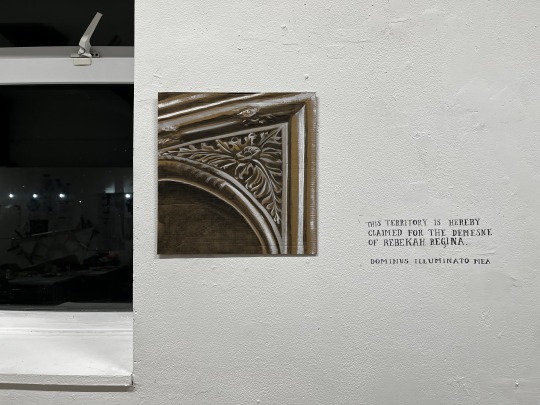



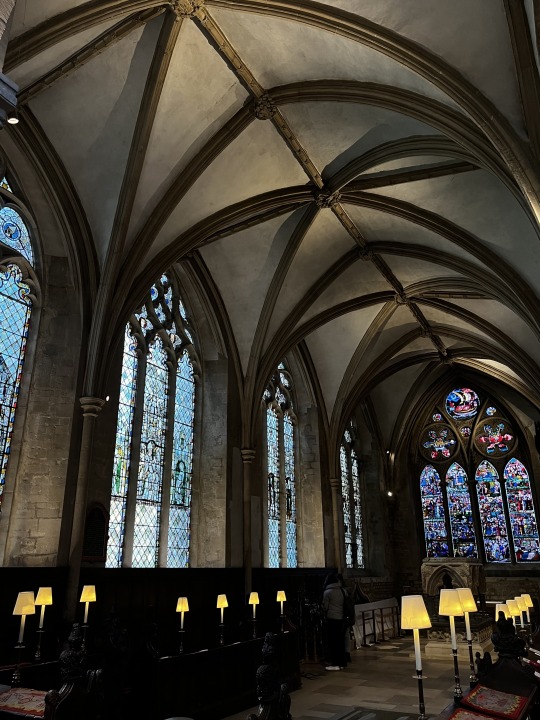

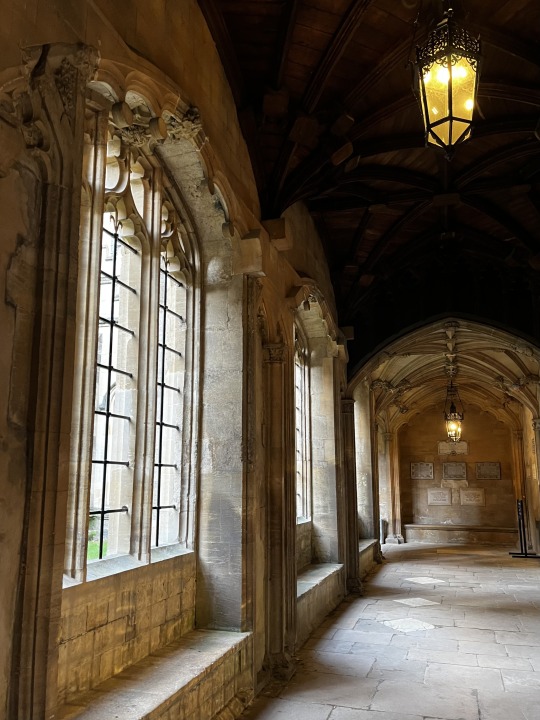


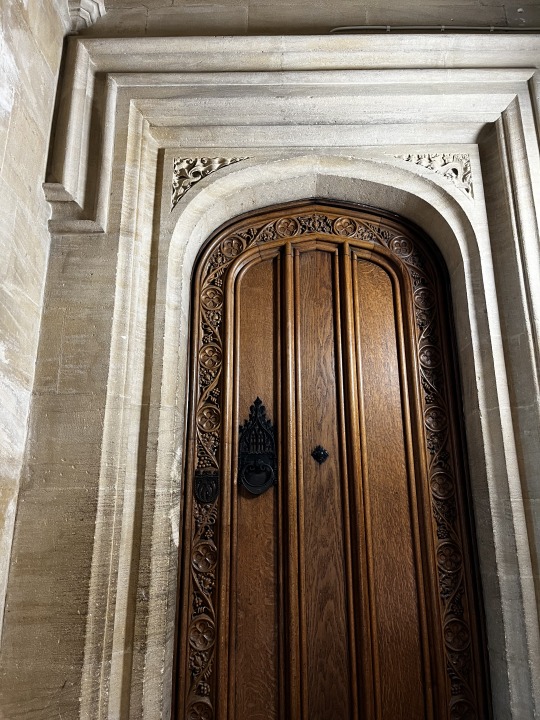
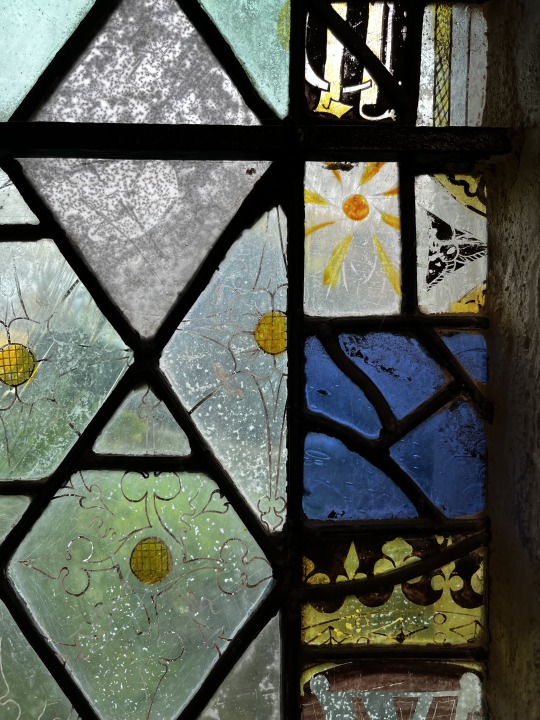


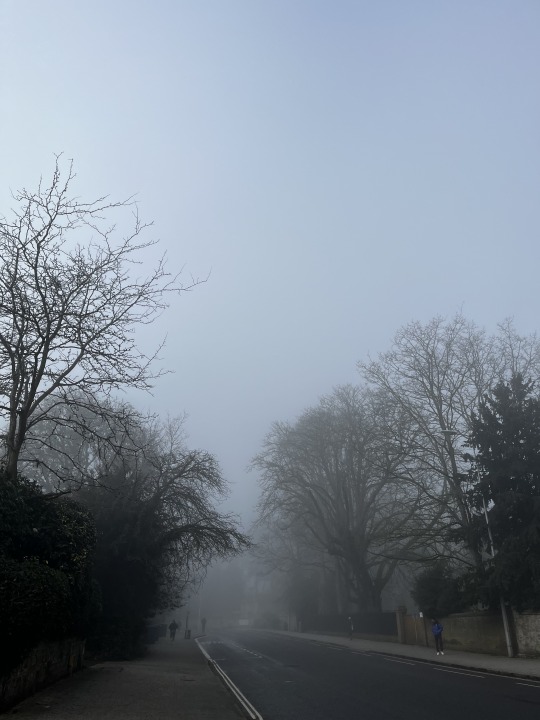
#oxford#christ church#christ church cathedral#architecture#architectural history#history#art history#history of art
1 note
·
View note
Text
Alterations of an Aesthetic Variety

And we've got a new look, to replace my Melburnian photos, with photos still not taken in Oxford. Feedback with be heard and passed to the council.
0 notes
Text

WEEK PENTAGONAL
{Feb 19th ~ 25th}
There was a blood orange milkshake sky on Monday night over Headington Hill. It was one to bathe in and breathe in.



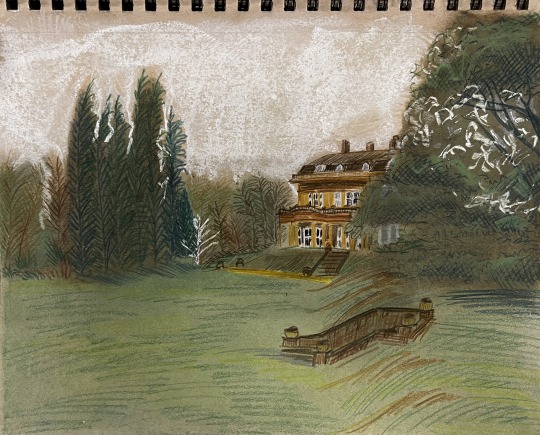




As evident from a couple of paltry photographs, I have by this fifth week began actually attempting to create art in the studio. So far it’s been a couple of loose warm-up sketches and watercolours, but I plan to get to oil paints soon. The facilities in the fine art studios here are less suited to my tastes in quality, but they shall have to do for five months. Brooxonians can’t be choosers, as they say.
I attended an evensong service at the Magdalen college chapel this week, featuring their choir. It was a transcendent experience if there ever was one. The evensong services are a great opportunity to visit the college chapels for free, and for their intended purpose, without a hoard of obnoxious, irreverent tourists constantly snapping social media posts. I intend to get to more of these services.
1 note
·
View note
Text
ABATY TYNDYRN
{Feb 2nd}
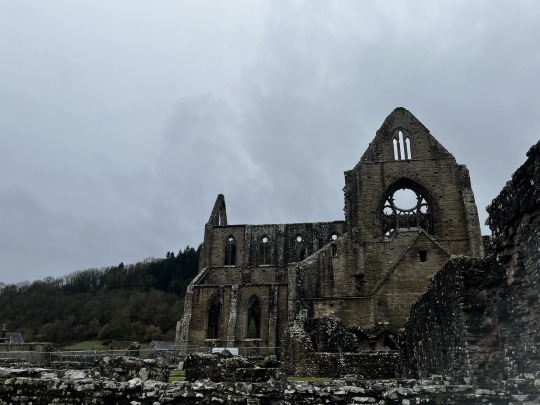
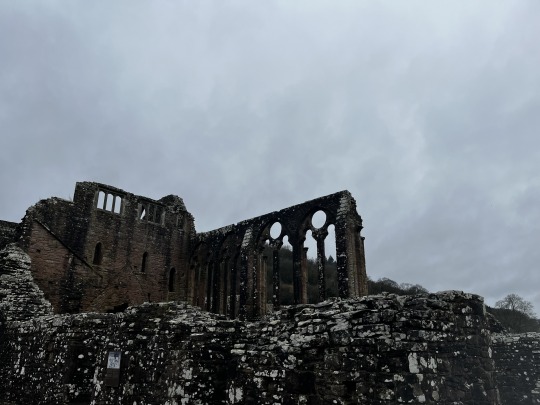



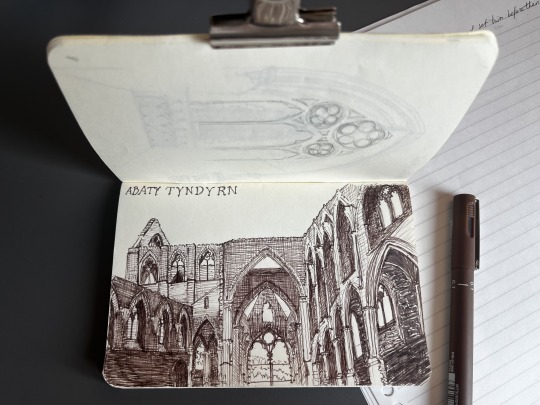
It's nice when other people think you're photogenic enough to take photos of you without asking, so you have proof to show your international associates that you have not morphed into the landscape of rural Wales and no longer have a human form.
2 notes
·
View notes
Text
WEEK QUADRATIC
{Feb 12th ~ 18th}
The unfortunate fact that I have left this periodical hanging loose at my third week on this weather-beaten island (as I currently fritter away at my twelfth) is not an irredeemable one. I am going to attempt in the next two weeks to intersperse your days with the photographic evidences of my travels and compliment them with the sundry annotations necessary for mine own satisfaction.
For those who have not been thus informed, I began (after overcoming a debilitating confusion of bureaucracy) a module descriptively entitled Oxford Buildings. It’s a 2nd year history of architecture class centred around the history of Oxford in particular, in which we wander around the city looking at pretty buildings. The tour for this week was of a selection of University buildings, the most notable of which was the famed Divinity School, which we entered without the high tourist’s fee because my lecturer begged them to. It’s an incredible room, with a fascinating history — I’ll go into it at a later point if anyone is interested. Overall, this new module is great fun and my new lecturer happens to be married to my other lecturer. She’s the best I’ve had so far, and took me along to the after-class weekly History of Art discussion group at a local pub — at which a peer of mine assisted me in the ordering of a solitary alcoholic beverage at the bar. Her assistance was necessary and appreciated.
I visited a beautiful exhibition of illuminated Chaucer manuscripts at the Weston Library that has inspired me to study more medieval illumination — and I have a feeling I’m going to be including more gold in my artworks from now on. Blame the Middle Ages.
Spring has begun to peek its tentative nose out at this point (exhibit. e & f, the first blossoms on the trees and daffodils in every patch of dirt accessible to their weaselly bulbs), though the weather remains as charming as a damp robin in a birdbath — so, pretty charming.
This was a week saturated with art and architecture — I visited, along with my elegant French flatmate, an exhibition at the Ashmolean of Victorian art, fashion and craftsmanship, with a focus on colour. It was a stunningly curated exhibition — what I wouldn’t give to curate a show as rich and seamless as this one. Strong jewel hues on the walls accentuated the focus colour for each section, some separated by bright, sheer curtains. I might end up going back to the museum to buy the exhibition book for it.
The Saturday was my first day trip ‘internationally’ — to the foreign land of Wales. The grand and dignified Abaty Tyndyrn was our first stop, and the poetry there was tangible, although our visit was far too short for my liking. I did complete a sketch there of the Abbey nave, which I will post in future. We travelled on to spend the rest of our time in Cardiff, which was moist and had a castle. Popping over into the National Gallery of Wales, we accidentally stumbled ourselves into a room teeming with Impressionists. Monet and Rodin took pride of place, and it brought me a surprising amount of joy to see their work in the flesh, for I had never before considered myself a huge fan of either of them until this point.
If I don’t post more in the next week, please send me an mouldy loaf of bread in the mail as a just consequence.


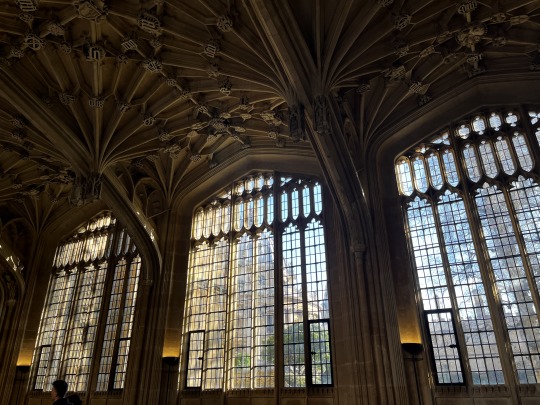





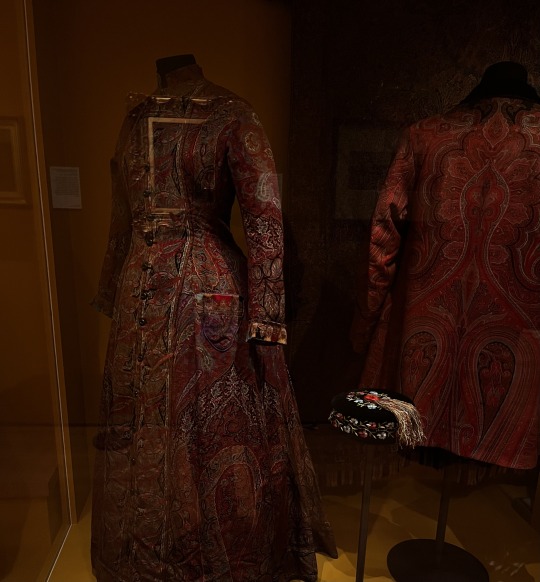
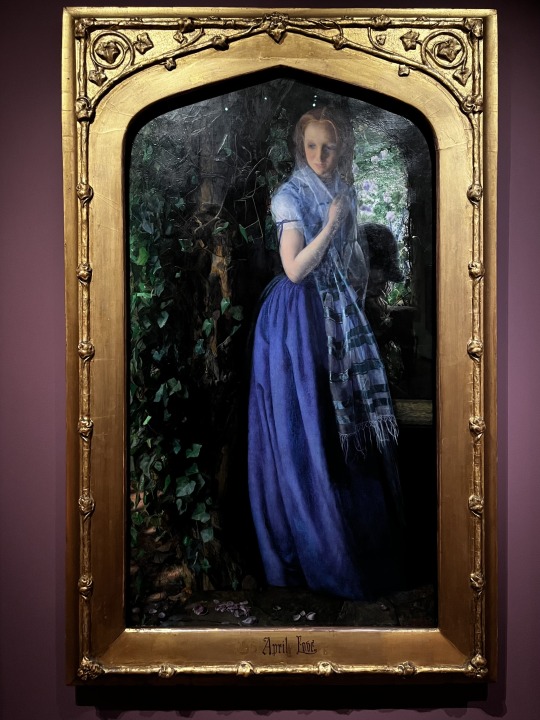


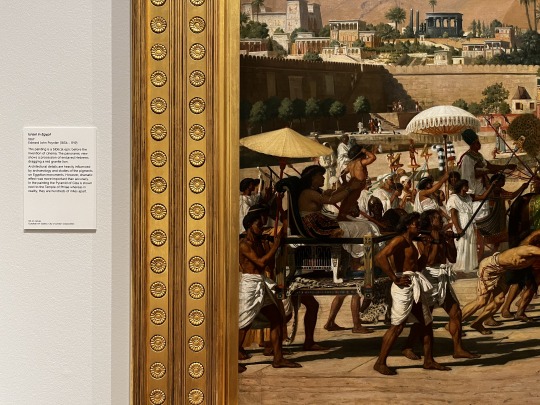






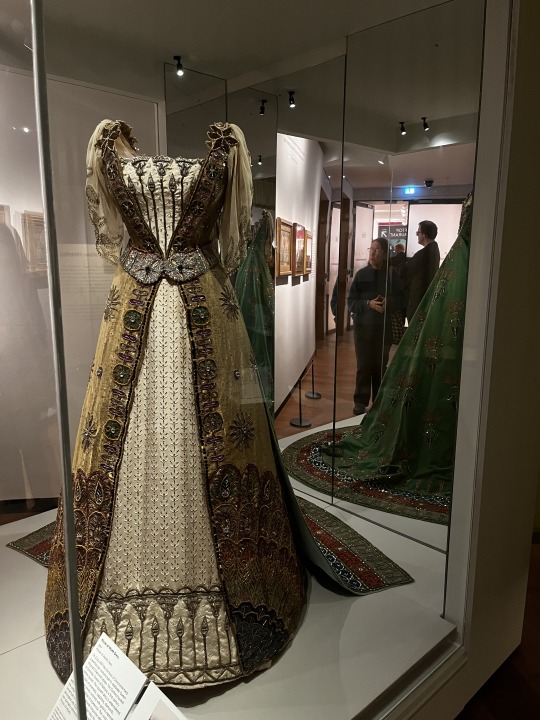







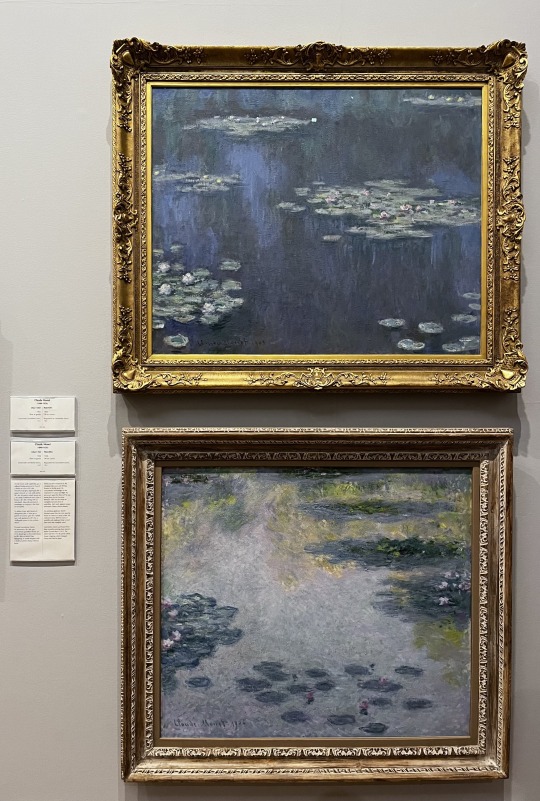

#oxford#wales#cardiff#tintern abbey#ashmolean#victorian art#colour revolution#chaucer#monet#rodin#academia
2 notes
·
View notes
Text
An anarchy in architectural analysis
My second collection of university writings is a three-part 'portfolio' of certain Oxford University buildings and their architectural features, functions and contexts. Each part of the portfolio is a short response to a different prompt, supported by photos and illustrations by your dear artist herself.
The chapel at New College and the converted-church library of St Peter-in-the-East are drastically different spaces, from different points in history.
The east window of St Peter-in-the-East is in the Perpendicular Gothic style, typical of medieval church windows, and the image itself is a typically intricate late-medieval design. It features the four evangelists (Matthew, Luke, Mark and John) with their respective attributes of the winged beasts of Revelation (man, calf, lion and eagle) in a vibrant colour palette of red, blue, green, purple and gold.
The Great West Window of New College chapel, on the other hand, has a very similar style of tracery, possibly 15thcentury, but a different glass design. The design was created by Sir Joshua Reynolds in the 18th century – an elaborately painted set of allegorical figures representing the Seven Cardinal Virtues. These seven striking women are portrayed in such pale colours with accents of gold and orange that, when compared to the east window of St Peter-in-the-East, contrasts radically against the older, fully saturated, typical medieval style. However, if we look around the New College antechapel, we will see that the colour palette for this newer Georgian glass is designed particularly to fit in this room, alongside the grisaille and red glass on the south side and the muted colours on the north. These medieval windows depict the multitudes of saints that we would expect from pre-Reformation Catholicism.
What is interesting, but not particularly obvious, is the difference in leading in the Great West Window compared to the typical medieval stained glass found in the rest of the antechapel as well as on the east window of St Peter-in-the-East. As illustrated in Figure 1, the leading in St Peter-in-the-East’s east window is prolific and detailed, separating and supporting many colours of glass, as well as painted glass pieces. It adds a contoured effect to the design, but by breaking up the image, also blocks some, albeit not much, light. In the Great West Window, however, as seen in Figure 2, the leading is significantly reduced. This will, inevitably, reduce the strength of the window as a whole, but allows the window to let in the maximum light possible, and highlights the intricately painted details. Only the three centre figures (Faith, Love and Hope, significantly, the three traditional theological virtues) merit any outline, but even this is minimal and serves only to accentuate the forms slightly.
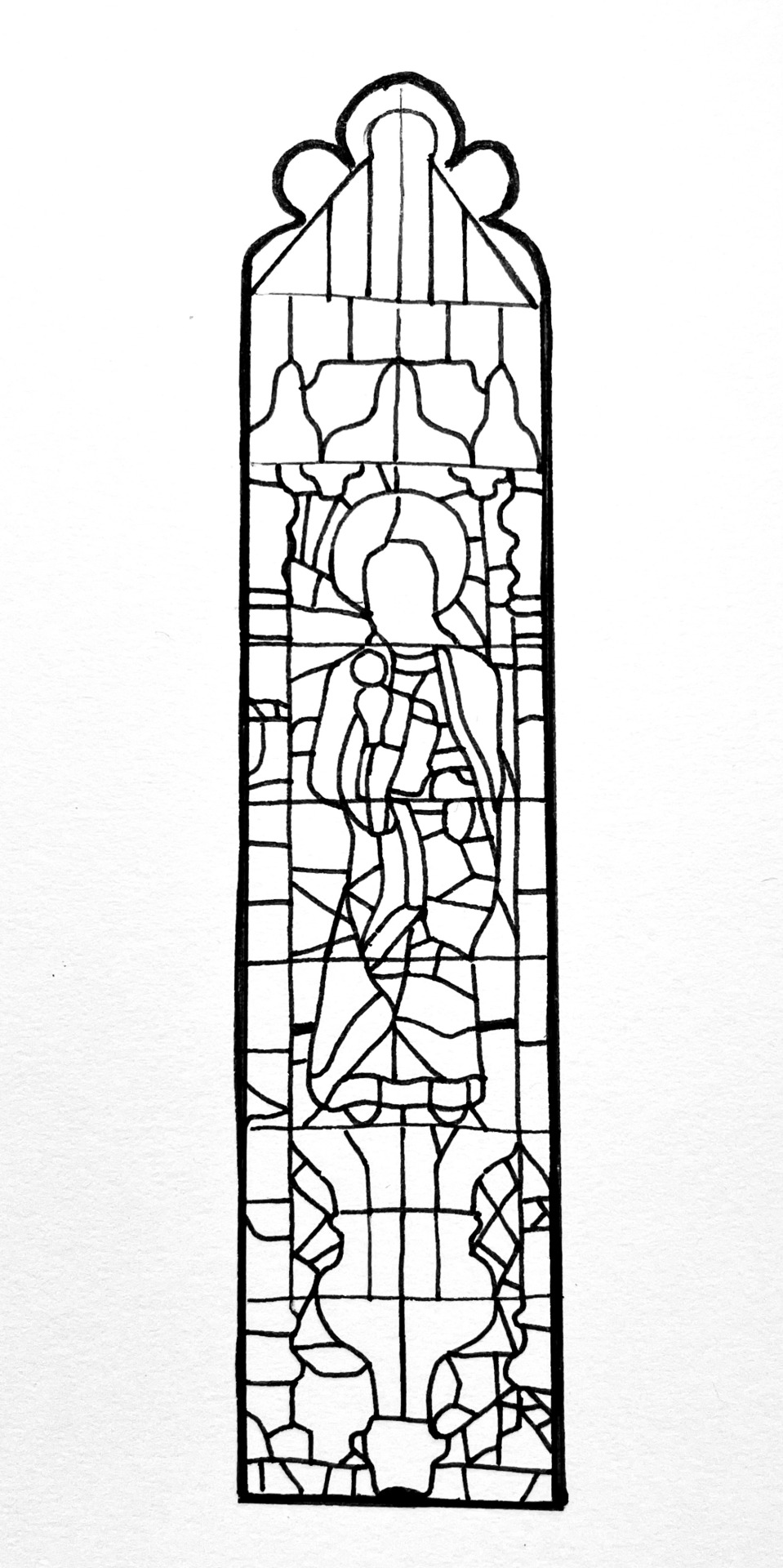



Figure 1 Illustration of leading on one light, featuring St Luke, east window, St Peter-in-the-East
Figure 2 Illustration of leading on lower lights, featuring the Seven Cardinal Virtues, west window, New College chapel
While the east end of St Peter-in-the-East is not unusual, with its detailed stained glass window, the east end of New College chapel abuts the tower and thus cannot have a window as is the custom. Instead, it features one of the grandest reredos in Oxford (Fig. 3). Housing multitudes of saints and prophets, these statues were restored in the Gothic Revival, after the Oxford Movement brought interest back to icons in the 19th century. They had been covered in plaster, presumably at the time of the Puritan movement when prayers to the saints and graven images were shunned.
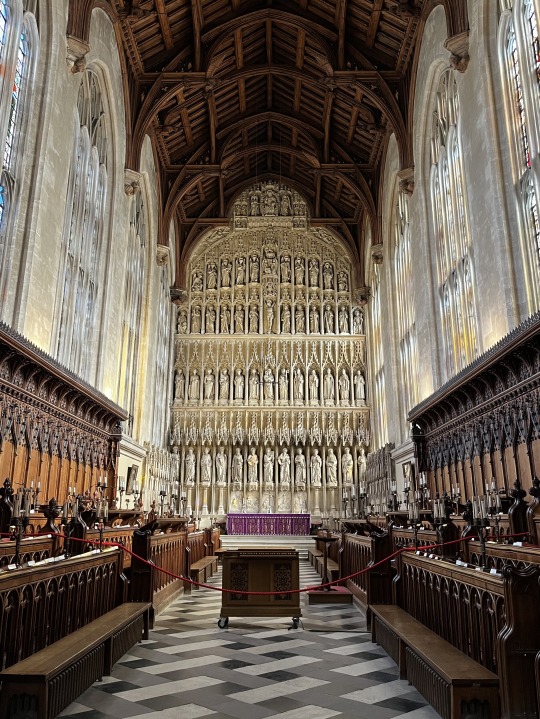
Figure 3 New College chapel reredos
———————————————————————
Christ Church boasts the largest quadrangle of all Oxford colleges, affectionately dubbed the ‘Tom Quad’, previously the ‘Great Quad’. The first thing that strikes you as you step into the quad from the south-east corner is the great late-Gothic styled Tom Tower, overlooking the space with a fair amount of character. It stands unique among the towers of Oxford – an ogee ‘onion’ dome, surrounded by finials, sitting atop a sturdy, eight-sided lantern. The grand west gate, situated under a large Perpendicular window, swallows up whoever stands beneath its four-centred arch (Fig. 1). The whole quad is lined with crenelation above, providing a fortified effect.
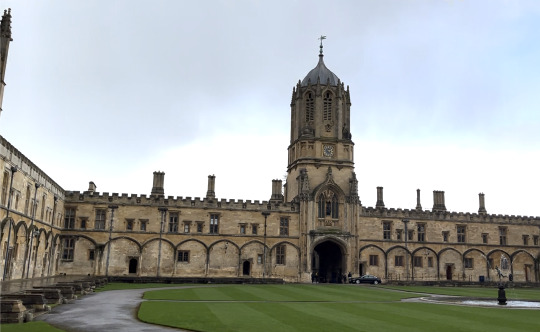
Figure 1 Tom Tower, overlooking Tom Quad, Mercury fountain in the foreground
The apparent blind arcade that encircles the whole quad is an unfortunate relic of the unexecuted Tudor-arched cloister that had been planned to shelter fellows on their way and enhance the grandeur and spectacle of the whole college. The flat-topped windows that peek through that arcade on the ground floor, perhaps because of that unfinished plan, are unevenly set, which provides a curious effect when noticed. They are simple and unadorned, serving only for light to the accommodation for fellows and company.
The dining hall sits to the south of the quad, its grand Tudor windows and high ceiling supported by narrow buttresses, and the string course bejewelled with grotesques and floral stonework. The elegant, decorative finials atop the buttresses are crocketed and panelled and serve only an visual and aesthetic purpose – to elongate the form of the hall and provide further illusion of height. The Great Staircase in the south-east (Fig. 4) has a beautiful elaborate fan-vaulted ceiling (Fig. 2) with swirling circular patterns that draw you up, inevitably adding to the grandeur of the quad, even if not visible from the outside.
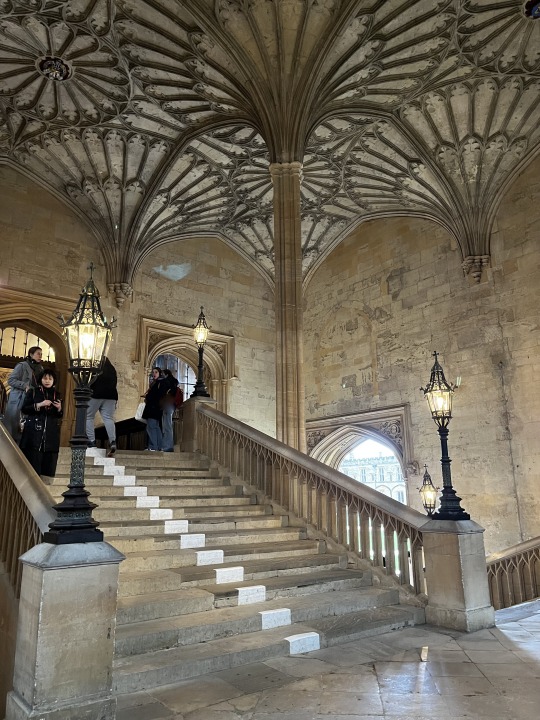
Figure 2 The Great Staircase
Three statues sit in elaborate niches above the entrance to the dining hall, two angels bearing heraldic symbols either side of Cardinal Wolsey, the founder of Cardinal college, the predecessor to Christ Church. (Fig. 3)

Figure 3 Statue of Cardinal Wolsey in Tom Quad
The Mercury fountain in the centre of the quad elevates the space as a water feature and seats a statue of its titular fleet-footed messenger god of Roman mythology, a figure representing communication, commerce and luck for the inhabitants of the college. (Fig. 1)
The two truncated bastions on the north and south-west corners of the quad (Fig. 4) and the bottom half of Tom Tower are more remains of the previous plans of Wolsey before his grand vision came to a halt. While Sir Christopher Wren finished the west entrance tower, the corners were never completed to the standard of Oxford towers that had been imagined.
The deanery sits elevated above the north-east corner, featuring the statue of John Fell, Dean from 1660 – appropriately, the students walking the corridor beneath the deanery would be watched closely by the Dean himself.

Figure 4 Plan of Christ Church, RCHM Inventory of the Historical Monuments of Oxford
———————————————————————
R. C. Whiting says in his introduction that ‘the rural aesthetic was firmly grasped by those interested in Oxford’s preservation’, highlighting the obvious prominent presence of swaths of green space within the city, that have successfully remained after so many centuries. He specifically mentions the ‘rural motifs’ of the Magdalen rose garden and Christ Church meadow, as well as the recurrent use of Cotswold stone around the city. An example of one of these such structures is the dubiously designed Nuffield College that was looked at on our Oxford walk. These college buildings are inspired by the idea of the Cotswold cottage, featuring flat façades and large chimney stacks on highly slanted roofs. These roofs mean expansive attic spaces that are made full use of with their dormer windows with lead glazing, all distinctive of that Cotswold architectural pattern. See the attached images comparing the interior façade of Nuffield’s Lower Quad with a typical Cotswold cottage in Coln St. Adwyns. Nuffield essentially scales up this cottage design to fit in with their Oxford college context, perhaps attempting to transfer the domestic feeling of village life to their college accommodation. They use the same sorts of natural materials, like Cotswold stone, and through that, provide an appearance of traditional craftsmanship that was repopularised during the Arts and Crafts movement. All these aspects of the design of Nuffield College indicate Whiting’s idea that new architects as well as those seeking to preserve Oxford focus on the promotion of natural and rural motifs.
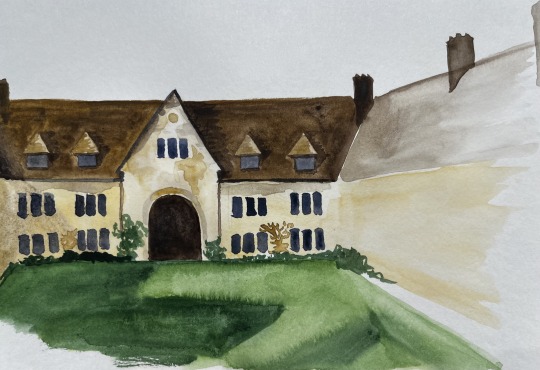
Figure 1 Nuffield College Lower Quad
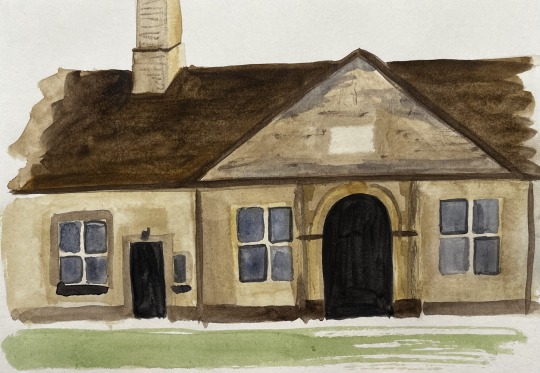
Figure 2 Typical Cotswold cottage
Many of Oxford’s Saxon and medieval buildings have repeated natural motifs distinctly or subtly included in their external designs, in the forms of capitals, ‘head stops’, and grotesques, among others. Carfax tower is an example of such, these floral images lining the string course below the entablature – some being hints of stone foliage, while the Green Man looks protectively down over the town square (Fig. 3). While the tower used to be part of the church of St Martin, the Green Man is a fascinating cultural remnant of Celtic paganism that has been carried down through the centuries, preserved in religious and secular architecture. Its symbolism seems appropriate for Oxford, being rebirth and new growth, as the past is preserved and rediscovered time and again.
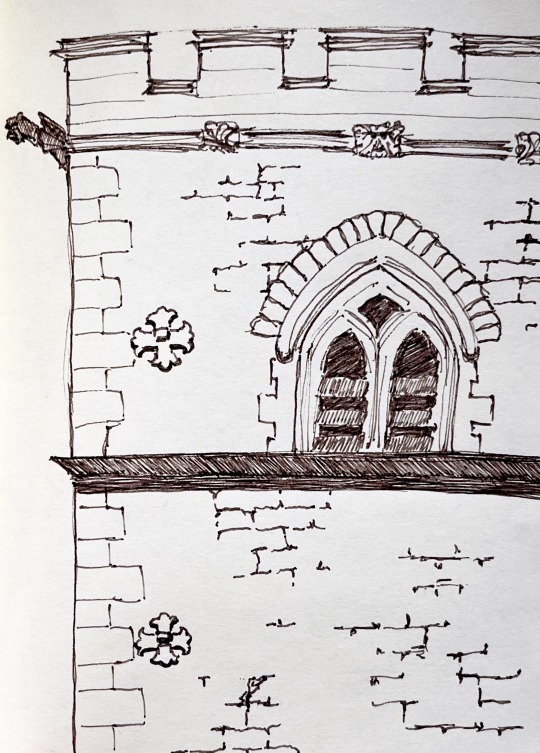
Figure 3 Carfax tower
Green spaces are extremely prevalent in the layout of Oxford, particular around and among the colleges, as they all have quadrangles, some of which are maintained with lawns, and many colleges also have well-established gardens. The Fellow’s Garden, hidden behind Christ Church Cathedral is one such space, elegantly maintained and preserved, in part, through its exclusivity. It assists to bring a sense of the country garden into the bustling centre of this very busy city.
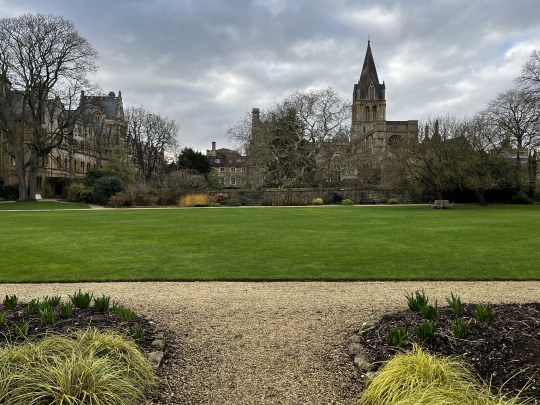
Figure 4 Fellow's Garden
2 notes
·
View notes
Text
A sample of my travails
I have an expression of interest or two for my posting the essays that I've been working on for my History of Art classes. I can't guarantee any real general appeal in them, but perhaps some may find them interesting, and I've been painfully silent on this forum for an extended period.
The first piece, below, is an art historical analysis of the approaches used in a chapter of E. H. Gombrich's widely-acclaimed book, The Story of Art, called 'Permanent Revolution: the nineteenth century'. I can't attach a copy of the chapter itself, but if you're really interested (and it is a very well-written book, and worthy of its reputation), then you can probably find a copy of the book at your local library. It will also give you context for the below essay. It does seem rather odd for me to publicise my university assignments, but the people have spoken, and I will appease my public.
E. H. Gombrich’s chapter, ‘Permanent revolution: The nineteenth century’, found towards the end of his master work, The Story of Art (1950), details the progression of art throughout the majority of the 1800s, through the various movements that arose in that time, and the development of thought that powered them. Through the last exciting efforts of the Romantics, the rugged truth of the Realists, to the glorious nature of the Pre-Raphaelites and, finally, the controversial rebellion of the Impressionists, Gombrich describes with enthusiasm the ebbs and flows of the art scene in Europe during this century of change, exploring the impact of the Industrial Revolution and the ways in which societies understood – or misunderstood – the work of these artists.
Gombrich actually specifies in his preface that since his intended audience are young adults, he intentionally avoids ‘pretentious jargon or bogus sentiment’ at the ‘risk of sounding casual’[1]. This casual attitude is visible in his writing style, as when he claims that something was ‘probably greater’[2] that it had ever been, and three times in the span of two paragraphs using the word ‘obvious’[3] which assumes points he hasn’t defended – although, this is not the most drastic of academic sins. Overall, his writing is very clear and readable, and his goal to write an enthusiastic and accessible, yet conceptually complex exploration of art history has certainly been achieved. The only concern might be that it is too short of a text to be called thorough, although that may be up to the individual to decide.
His overall approach whilst writing his artistic summary of the nineteenth century is a balance of social history, as is characteristic of art history scholarship in the early 20th century, with short biographical focuses. Breaking down the waves of thought into movements, rather than time periods, helps to concentrate his discussion on how artistic philosophies influenced changes in style, without falling into the fallacy of strict holistic periodisation. Within each movement, Gombrich selects two or three key figures who spearheaded the new artistic attitudes and spends some time describing their influences – past and present – and thought processes, their artistic values and the methodologies that went into creating something new. Avoiding, for the most part, elevating each artist above their surrounding community, Gombrich also effectively analyses the reception of each new movement, the conversations that were had as a result among the artists and their critics, and how those movements held some sway over the surrounding and subsequent ones in their social context. On the other hand, Gombrich’s technique of only concentrating on a few artists in each movement, for the sake of simplicity and clear reception, does tend towards implying a few solitary masters who orchestrated each artistic revolution from above, without the context of hundreds of other artists and craftsmen in studios and academies in the surrounding societies. This sort of Vasarian undercurrent is still subtly present when he refers back to fifteenth-century artists who were overshadowed by the ‘genius of Leonardo’[4] and likens this phenomenon to the impact that Renoir and the other Impressionists had on nineteenth-century painting, through Renoir’s ‘great artistic wisdom’[5]. Gombrich does point out, however, that for the most part, the artists who were popular in this period, are not the artists whom we remember[6]. As a result of this phenomenon, the artists whose so-called genius provided them with a legacy were those whose genius was recognised less by their contemporaries than by future generations, contrary to the cases of Leonardo or Michelangelo. This sort of approach focused on the individual is not an explicit aspect of Gombrich’s text, but it does sits quietly in the background; just enough to flavour his arguments without overwhelming them.
As far as historicity goes, overall, Gombrich spends most of his text comparing his artists to those who came before them, how their philosophical attitudes developed out of the previous ideas and practices, without falsely imagining that they were working towards a specific future. However, there are occasions throughout in which he seems to judge the artists’ critics of not seeing the bigger picture, so to speak, and not understanding what we now understand about their works. This isn’t necessarily an invalid position to take as regards criticism that wasn’t open to these upcoming art styles, but there is still a level of judgement felt towards the society of the time for not being advanced enough to ‘know how to look at such paintings’[7]. We might even say that Gombrich implies that certain of these movements were “ahead of their time”, which again, can’t be true; yet that remains subtle throughout. There is an interesting point that Gombrich makes in this chapter that the Impressionists began to paint nature the way they saw it, rather than what they know it looked like[8]. This concept of relying on seeing rather than knowing almost seems at first pass to be criticising the artists of the past for not understanding the visual world well enough to depict it accurately, but in reality, Gombrich explains that it is actually that they knew too much, so to speak, and that their head knowledge was getting in the way of what their eyes could see in the moment. He effectively illustrates how the development of artistic skills, to some extent, came about through a deliberate loss or chosen ignorance of what had come to be taken for granted.
Gombrich approaches the changes in the art world during this century by referring to an increase in choice of style and taste proceeding out of the Industrial Revolution, and while he describes the effects of the changes in taste, and the discrepancies between the taste of artists and their public, he seems to have missed a point in his narrative. He describes a loss of some ‘unity of tradition’[9], that perhaps may have been elaborated on in previous chapters of his book, but there is no clear explanation of what this unified tradition actually meant or consisted of, and thus we are left with a long chapter introduction that explores the effect of losing something that is essentially an unknown.
As for the effects of the Industrial Revolution, more credit could have been given to the invention of photography for altering the function of art. With the purpose of paintings and sculptures changing from records and descriptions to expressions and elaborations, Gombrich suggests that this century is the one in which a distinction is made ‘between Art with a capital A and the mere exercise of a craft’[10]. As conventions widen and expand in different directions, artists finally had the chance to express themselves in a way that they had not before – ‘where there is no choice there is no expression’[11], as he puts it – and the point he makes is that art’s progression through the nineteenth century is one of expansion, rather than a direct upward or downward trend. Art did not specifically improve or recede during this time, because the significant change was not in the area of style but of purpose.[12]
As he wrote the first edition of The Story of Art before the second wave of feminism in the 1960s, it might be too much to expect that Gombrich would mention and discuss the nineteenth-century women who contributed to the artistic canon, but nevertheless, his recurring manner of speaking of the artist as “he” is a sign of the time in which he wrote. When describing ‘what people who cared about art came to look for in exhibitions’[13], although gender is not his primary criterium, he illustrates an image of the worthwhile, sincere, artistic “man”. He does not mention a single female artist, in spite of the 1800s being a century of improved opportunity for women artists. A number of significant women were involved around the Pre-Raphaelite Brotherhood, who, as well as serving as models and muses for the men, were artists themselves, but they fail to merit an appearance in The Story of Art. The only mention of a woman in Gombrich’s whole chapter, beside the subjects of artworks, is in a quote from a critic in 1876 who degrades the Impressionists for having a woman as a founding member and critical part of their exhibitions[14]. While there is no sign of explicit degradation of women on Gombrich’s part in his text, their absence is still keenly felt by the reader who is conscious of these issues seventy years after it was published.
While not a perfect piece of art historical writing, with an unbalanced artist demographic and some non-historicist attitudes characteristic of his day, Gombrich succeeds in the primary goals of his text, and in this chapter considers a fair breadth of the important aspects of a century of art history.
[1] E. H. Gombrich, The Story of Art, London: Phaidon, 1989, vii.
[2] Ibid. 395.
[3] Ibid. 398-399.
[4] Ibid. 413.
[5] Ibid. 412.
[6] Ibid. 399.
[7] Ibid. 413.
[8] Ibid. 406.
[9] Ibid. 397.
[10] Ibid. 395.
[11] Ibid. 398.
[12] Ibid.
[13] Ibid.
[14] Ibid. 411.
#ibid#whatamarvellousword#justrollsoffthetongue#oxford#academia#history#history of art#art history#university
2 notes
·
View notes
Text

Light is sweet, and it is pleasant for the eyes to see the sun.
—Ecclesiastes 11:7—
An appetiser for the start of this week - I’ll aim to put up some more soon, but I make no promises.
3 notes
·
View notes
Text
TERTIARY WEEK
{Feb 5th ~ 11th}
After meeting up at church with a local Oxford relative of the wife of an associate of a friend (J), and meeting her sister and niece visiting from Brisbane, I was immediately invited along to their sightseeing trip the following day. The relief of spending time with Christian Australians again was tangible in my tendons. J showed us the passage to the elusive Turf Tavern, my new favourite eatery, and we spent a good plenty of time at the Natural History Museum and the Pitts Rivers Museum, seeing fossils, taxidermy, and plenty of old things. We even climbed the tower of the Church of St Mary to get the full Oxford tourist experience.
My classes are warming up and I’m excited to get into the thick of things. My art history readings are being enthusiastically read, my brown pen has made taking notes a transcendent experience, and I’ve been exploring new places to study around the uni. I’ve been sketching a lot of the architecture round about, but I hope to get into some painting soon — there are still some art supply essentials that I had to leave behind (for some reason, it's a fire hazard to have flammable liquids in a flying tin can) that I need to buy replacements for before I can get started with my oils again.
A flatmate and I attended a lecture on women artists at Trinity College, and were confronted with just how much more funding Oxford Uni has than Brookes. I shall study there vicariously, and merely dream of affording the tuition.
I went out again another day with my Brisbanian friends to have morning cream tea at the quaint, four-buildinged town of Thrupp, and then travelled on to Woodstock, where we encountered a friendly little cashier, fully equipped with an ostentatious antique shoppe. We traversed our way onto the grounds of Blenheim Palace that had just the right atmosphere of obscurity and misty twilight from across the lake, so that when it began to rain, we weren’t even disappointed to leave. I almost don’t want to return to spoil the memory of it. We’ve had a baker’s dozen of wonderfully rainy days, so I’m getting the full English experience.
I met more people at two church services in one day than I met in my whole first week here. I have been attending a small baptist church on Sunday mornings and just visited a beautiful low-Anglican church for their evening service. I enjoyed that one too, so I may end up making myself a regular attendee at both services a week.
I’ve reached a point of familiarity with my surrounds that allows me to go about my day without being incomprehensibly overwhelmed by novelty, and I’ve also reached a point of exhaustion with the tourist mindset. I think these two come hand in hand to some extent. As I mentioned, I’m sick of taking photos, so I’m being much more selective now about what and how I capture the wondrous curiosities of my explorations.
My wildlife encounters so far have been with true Eurasian magpies (of the corvid variety, as opposed to the yodelling Australian magpie of the butcherbird variety), blackbirds and other thrushes, redbreasted robins, exquisite and minuscule blue tits, jackdaws, starlings, red kites (which I have since been told are the eagle-y birds from my entrance to Oxford) and the eastern grey squirrel.
I am yet to locate any actual elms, despite living in the building of that name - so either the elms of Clive Booth Student Village Elm Block fame are hidden somewhere in their deciduous form, out of my sight, or else the building was named so because it lies on the grave that our lost elm brethren have lived, standing arrogantly in their stead, having won the great battle of urbanisation.
In any case, it is always lovely to hear the church bells ringing out hourly through the cold, crisp air over the city on a Sunday.



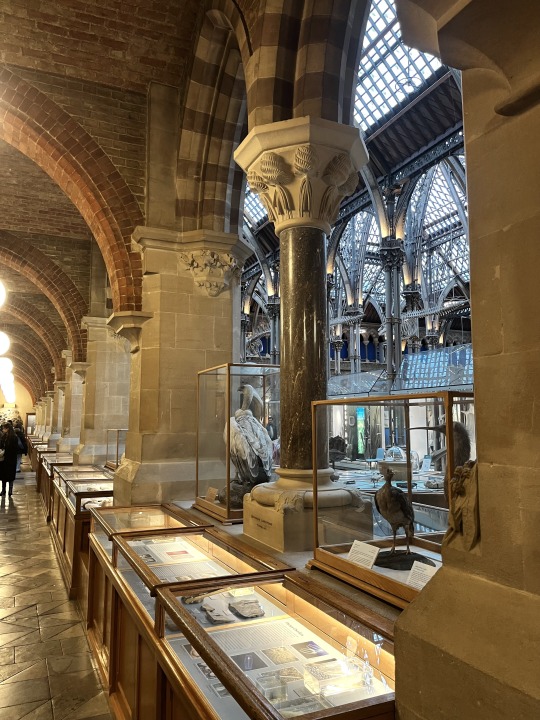
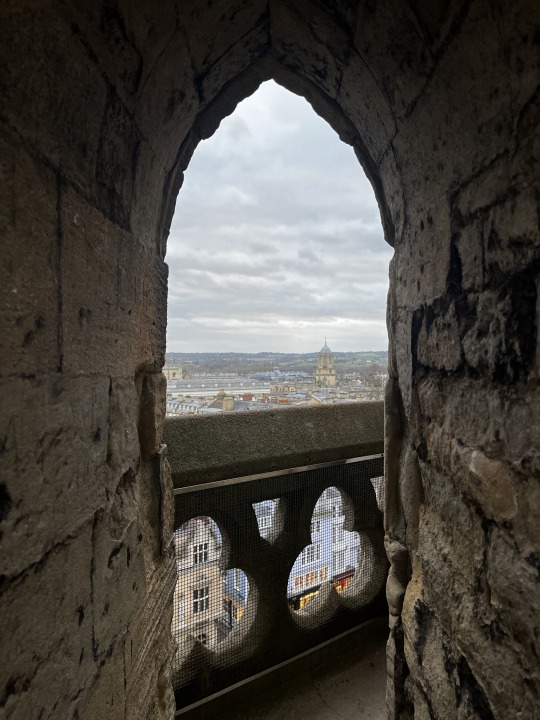
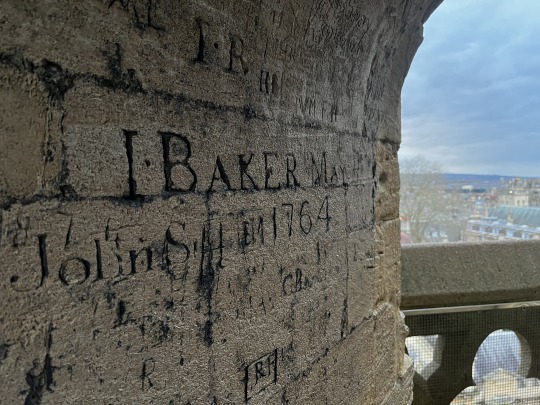
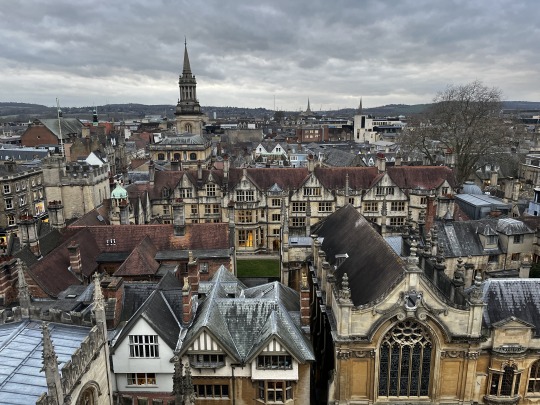
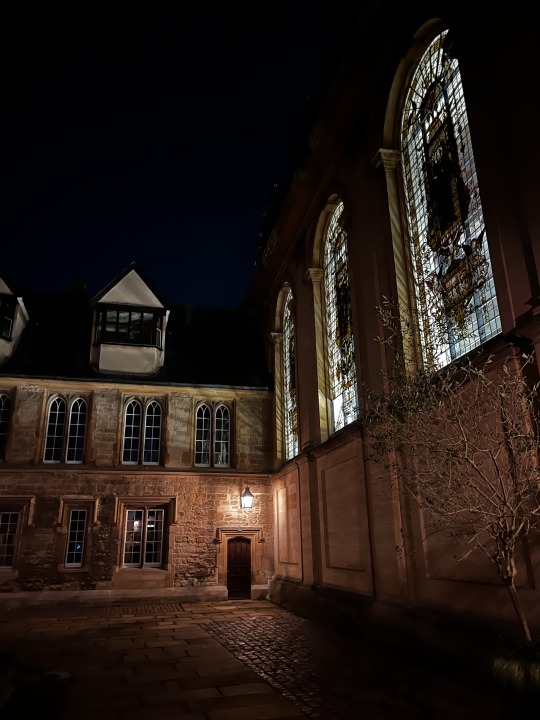
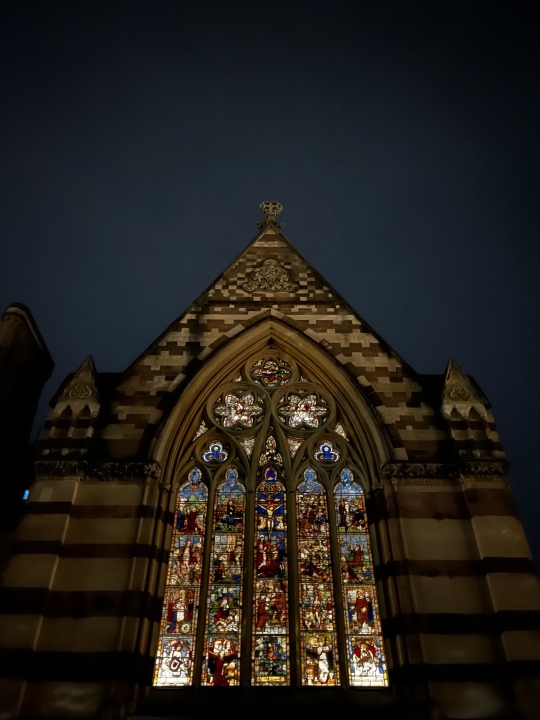
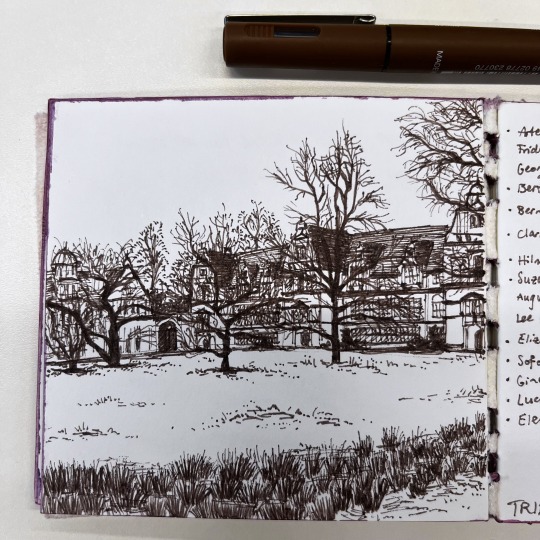



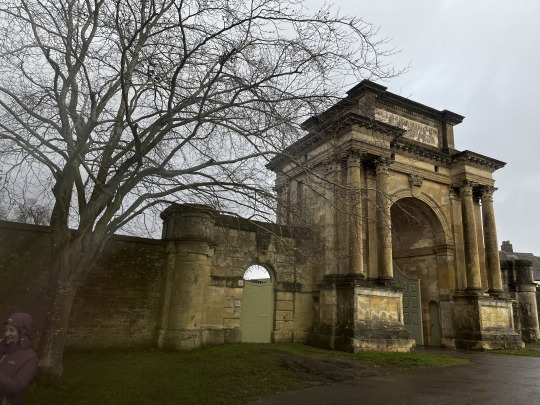



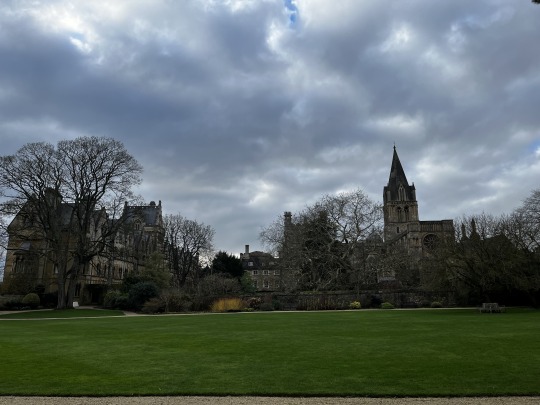
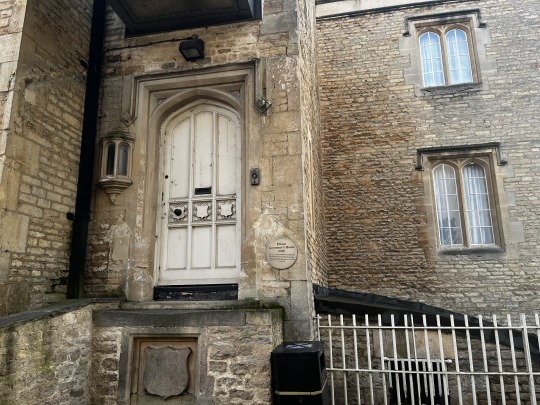
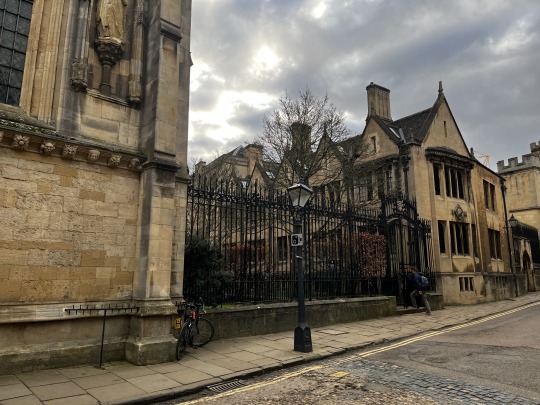

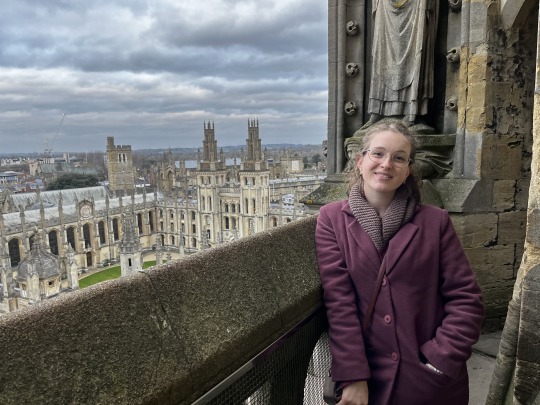
5 notes
·
View notes
Text
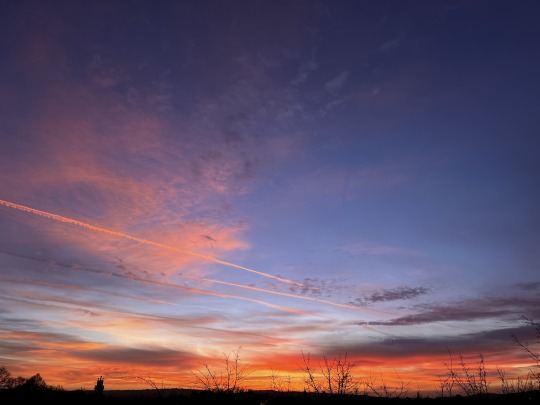
SECONDARY WEEK
{Jan 29th ~ Feb 4th}
My classes started: Studio Practice, and Reading Art History. The art history class has been truly interesting and I always enjoy reading about ‘cretinous yokels’ and ‘milquetoasts’ for university assignments — my lecturer also seems a quality fellow.
I did find out, to my great dismay that Benjamin ‘Ben’ Howard esq., the hit English musician, is going on tour in May. You would think — you really would think — that he might tour the UK, being an Englishman. But no. He is touring Melbourne. Whilst I sit here on his jolly back porch waiting for him to answer his doorbell. Well, not quite, since the English don’t have porches, but I digress.
I bought an unspecified quantity (I fear persecution) of books at Blackwells to make the most of the limited time student discount, but I did promise myself that I would not purchase more books for another month. We shall see if that comes to pass…
Mes chères French flatmates have been teaching me to cook, and I have been attempting to live up to their shining examples, to varied levels of success. At least I have been eating food. We also celebrated the French festival of Chandeleur (which seems to just be an excuse to eat an inordinate number of crêpes) with the French and Italian fellows from the flat downstairs. I also burned my hand on the oven, but we shall speak naught of these trivialities.
The second Saturday was our Brookes-organised-for-the-international-students day-trip to Bath. The fog was thick and tasty, the rain was blissful and the Abbey was IMMENSE. I learned about the intricate fan vaulting of the ceiling and the curious tale of the man who rebuilt the whole abbey in the 1500s and had a dream of angel ascending and descending on a ladder, which is now represented on the building’s façade.
We visited the Roman baths, which I had been initially reluctant to do, for the price of £25 ($50 for you folks in the Commonwealth), until I got inside and realised the extent of the underground labyrinth of rocks and rusty metal bits in glass cabinets. They were very interesting rocks and rusty metal bits, I will admit. There was also a complete human skeleton on display, which was interesting and unsettling next to its artificially reconstructed face made of wax… I had a lovely chat with a first-century Roman lady (in Latin, she kindly informed me) about cursing our enemies with stubbed toes and minor inconveniences. The place was, however, extremely busy and so extensive that my flatmate and I had to rush through the rest, squishing between throngs of tourists, to get to our meeting point.
Our tour guide from Brookes took us to the big circley place that they used in the hit 2007 film by Jane Austen, Persuasion. It was very long and circular. If you don’t know what I’m talking about and you think I should be more descriptive, then you are wrong. The architecture in Bath is almost as impressive as Oxford, depending on which measure you use, and it’s a truly beautiful city. I actually felt more at home there after one afternoon than on my first day in Oxford, mostly because Bath is in a much more undulating landscape, surrounded by hills on three sides. It made me think of home. We did also visit a wonderfully large bookshop there (Topping & Co.) which, if I had not, just a week before, seen Blackwells in Oxford, I would have found shockingly grand. It had sliding library ladders up against all the shelves, and multiple floors, and a great selection. I WILL have you know that I, in fact, successfully did NOT buy any books while I was there.





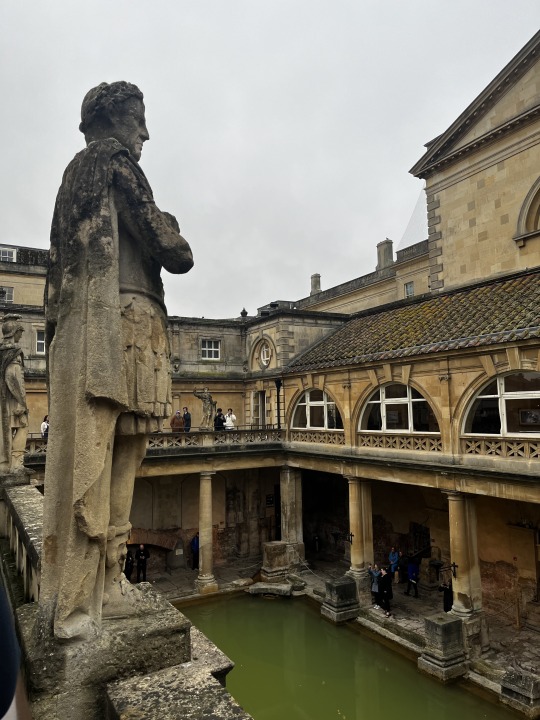









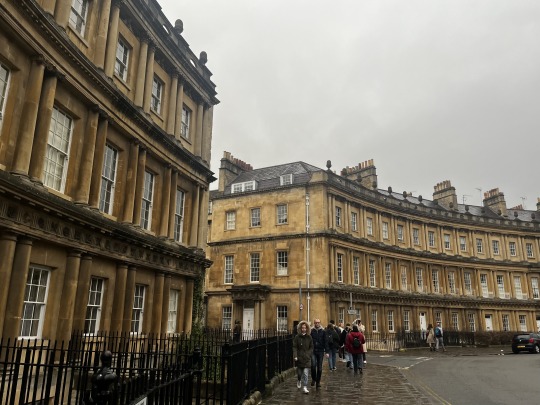


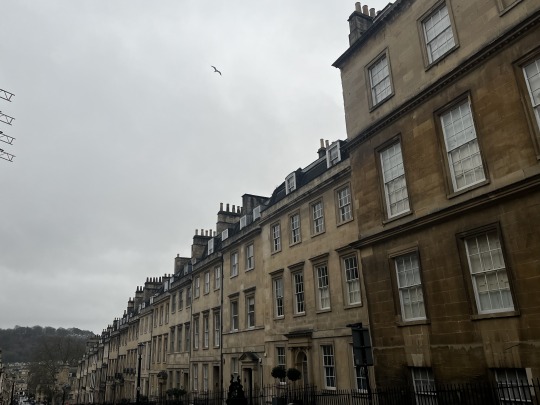

5 notes
·
View notes
Text
A TRIAD OF ENGLISH WEEKS
My ever treasured Melbourne-dwellers and otherwise, I acknowledge that I have dallied in updating this digital correspondence, but I shan’t apologise because I have had other things to do. Please enjoy the subsequent retelling of my first three weeks, broken up into three posts.
I have included some photographs of myself in case y’all were getting worried that I have become naught but a voice in the wind, and I’ve also tried to add image captions, so hopefully they are visible somewhere in the binary code.
Remembering all the way back, to when I first jumped foot into English puddle outside Heathrow airport, I shall recall my initial impressions as I travelled by omnibus:
“Where are all the leaves? The images of speed cameras on road signs are single-exposure film cameras instead of digital cameras, how curious. There are so many RIVERS. Where have they put the leaves? What are those birds? Eagles? Falcons? Kites? Kestrels? Hawks? Phoenixes? Goodness, I’m on the same island as Tom Watermelon Rosenthal himself. There’s so much ivy. It’s a very watery country. You’d think we’re on an island. There is a lot of litter along the motorway. Spire tally: 3. How long is a mile? Oh look an evergreen. So many mosses and ivies. Where does Tom Rosenthal live? More eagle-y things. OH LOOK IT’S OXFORD.”
And thus begins my tale.
WEEK THE FIRST
{Jan 23rd ~ 28th}
There was a much sightseeing, as one might expect during one’s first week in the great university city of Oxford - one might say too much, and I am one. It was an exhausting first week, as is also to be expected, and I have been jolly sick of taking photographs ever since. That hasn’t stopped me much from continuing to take them, unfortunately for me and fortunately for you.
In the very first Oxford bookshop I stepped into, on the very first shelf I browsed, there sat an original-French edition of Le Petit Prince, avec des aquarelles de l’auteur, an edition that I have been searching for for over three years in Melbourne, to no avail. This discovery has pleased me greatly, and it has so far been as enjoyable a read as I had hoped.
I have purchased proper bedding, so yes, Grandma, I’ve been sleeping comfortably, in case you were worried. I put up my pictures and tidied my things and bought a botanical friend who I have named Millicent — Liss for short. My room is starting to feel cosier — starting to feel a little like a home I could get to know. One befitting an art student, I hope, in spite of all the grey furniture. The English rain does patter softly against my English windowpane particularly pleasantly, you may be pleased to know.
I began to spend time with a couple of darling Frenchwomen from my flat who are proving to be quite the jolly companions. Plus, they happen to love a bookstore quest. There is a marvellous little art store on Broad that we found on detour in our search for the largest bookstore in the United Kingdom. Blackwells. We found it. It is magnificent. My bookstore standards have heightened dramatically since stepping foot in that glorious house of knowledge. Unending, spiralling, overwhelming, unimaginable, five floors and miles of shelves with anything you could ever hope to read. I bought three — (and perhaps some more later).
Exploring the park behind my flat, I discovered the splendid 1824 Headington Hill Hall (pictured in previous post) and a rich array of flora that I am anxious to see in foliage. The snowdrops and daffodils have been emerging, however, and I never expected that refined golden narcissus, the garden flower, to be so utterly prolific, being found on every nature-strip, in every garden bed, and under every tree. I suppose it makes sense that it had to be a wildflower somewhere in the world.
I attended a Brookes-run tour of the city in this first week, to get some general history, but I always find self-guided tours far more rewarding. I wandered around St Mary’s Church, Scriptum (a beautiful Italian stationary shoppe), along the High, Cornmarket and Broad streets of shops and spectacles, and around and about the Bodleian quadrangle and Sheldonian theatre.
The tension that built up as I was establishing my place over this first week reached the boiling point when I got to church the first Sunday. I had walked the half an hour up the road out of fear of the bus system, and as I sat down in the pew, and heard the musicians practicing their hymns, the emotional strain got to me immediately. At least I now know that sobbing dramatically in church is a good way to meet new people and make a strong impression… But in seriousness, they were extremely welcoming and the church instantly felt familiar. I know I’m in the right place.

4 notes
·
View notes
Text



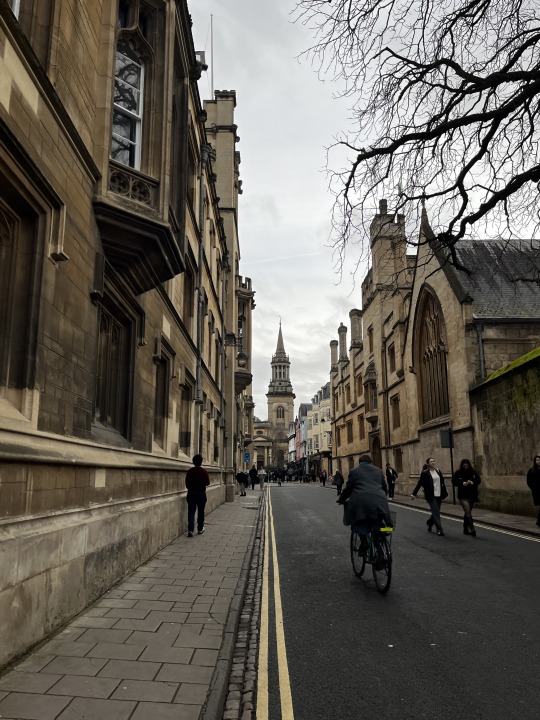
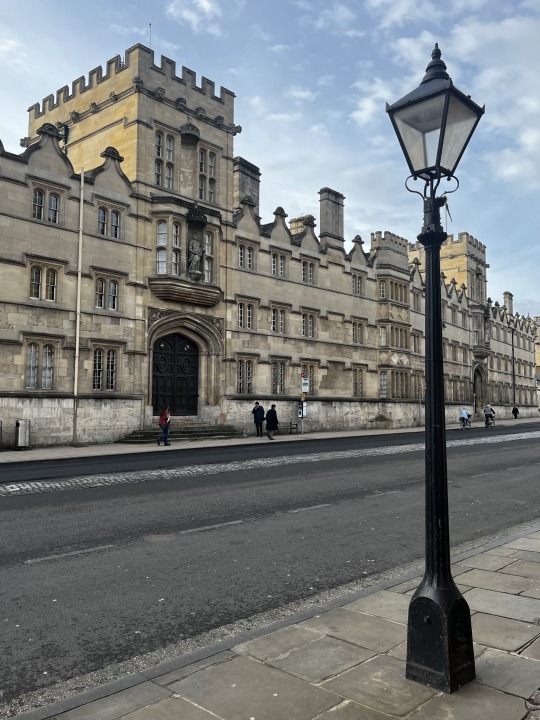


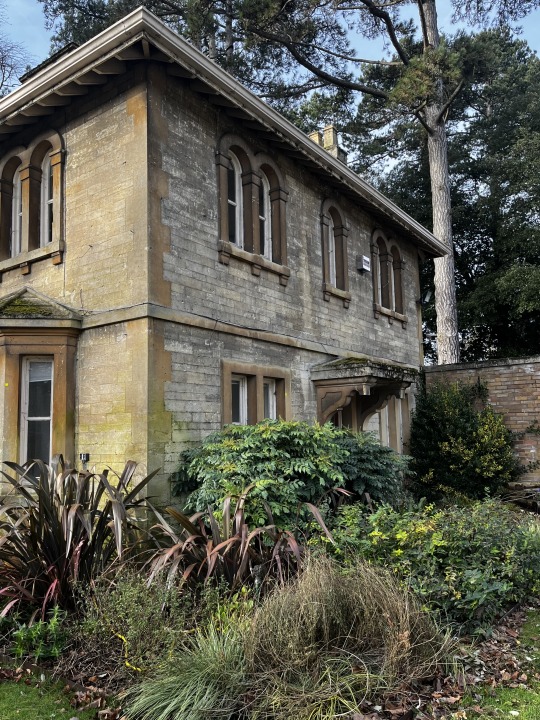
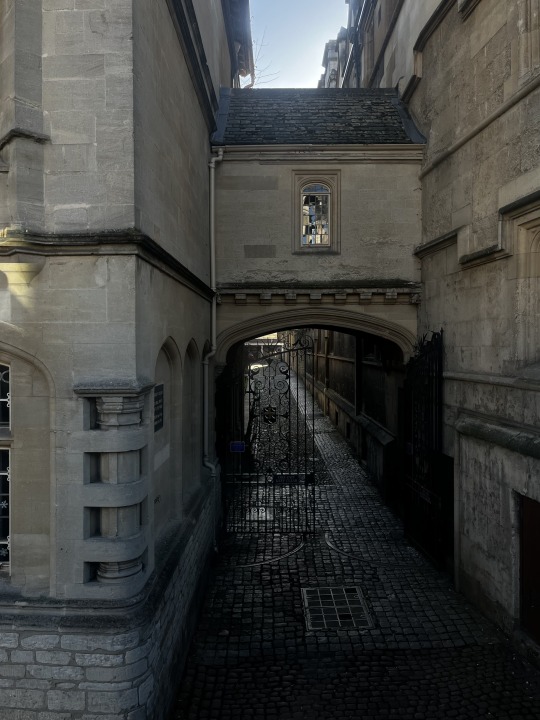
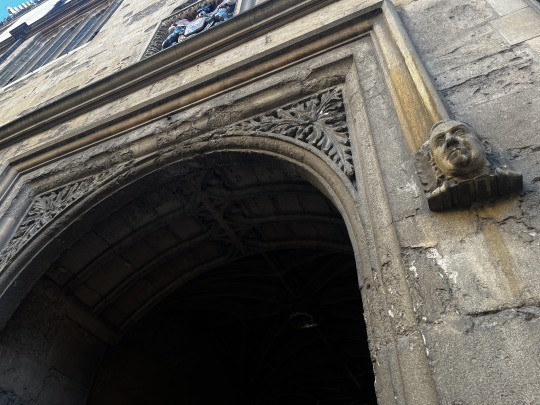

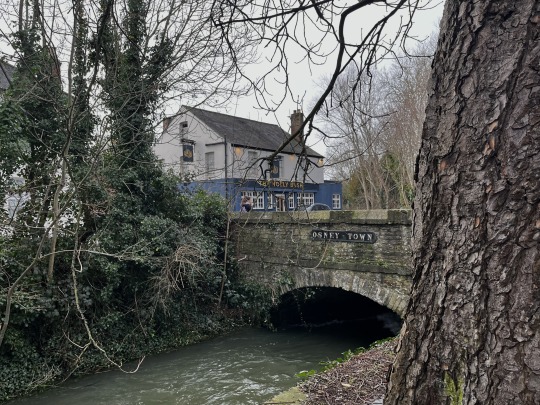



Update the Second and One Half
Behold a selection of non-blue tainted photos to clump together in a seperate post for my colour-minded mind.
Bisous.
7 notes
·
View notes
Text







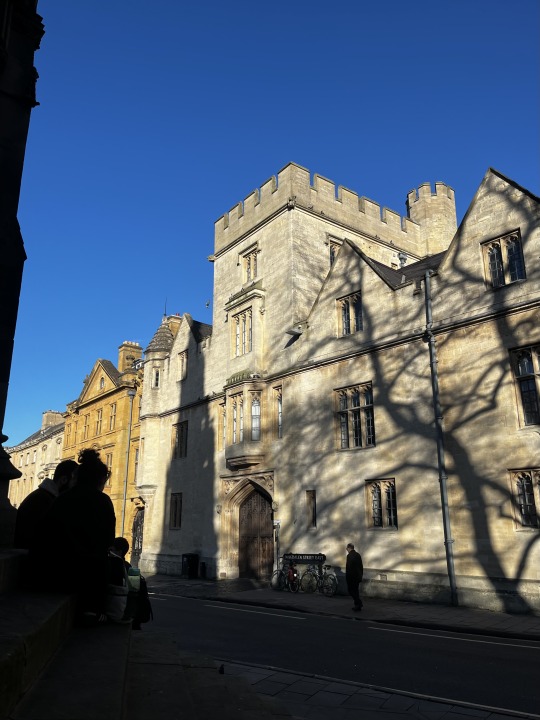
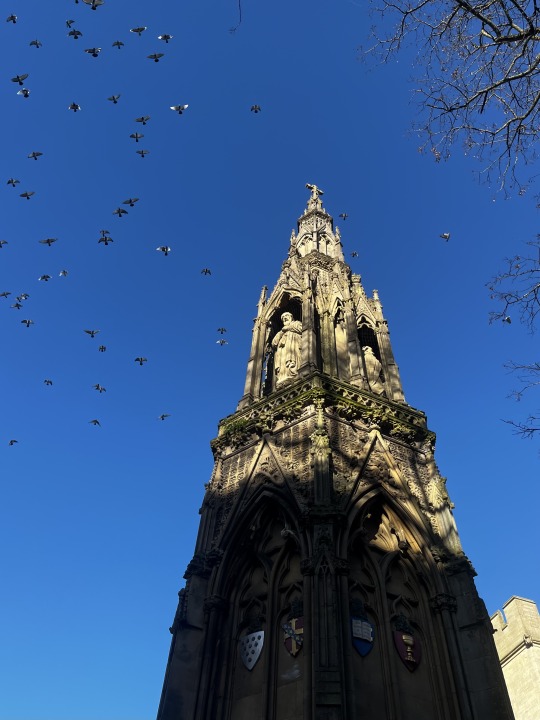



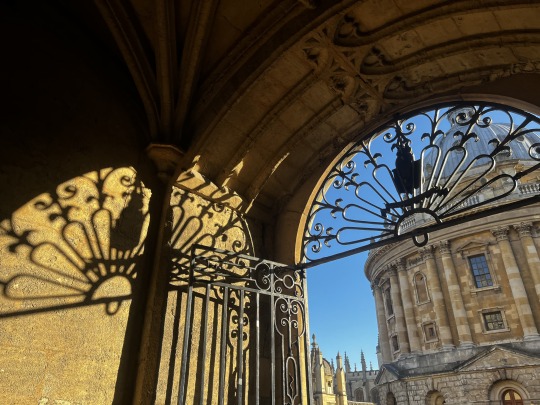



Update the Second
Greetings, precious. *gollum*
I have not had the mental fortitude to write anything this week, but I shall instead bless you with the photographs of my sightseeing adventures thus far.
Classes at Brookes commence this week, so the nature of these blogular updates remains to be seen, but I shall try my best to keep providing the masses with the content they demand.
Loving you muchly,
Sleepy Bek
6 notes
·
View notes
Text
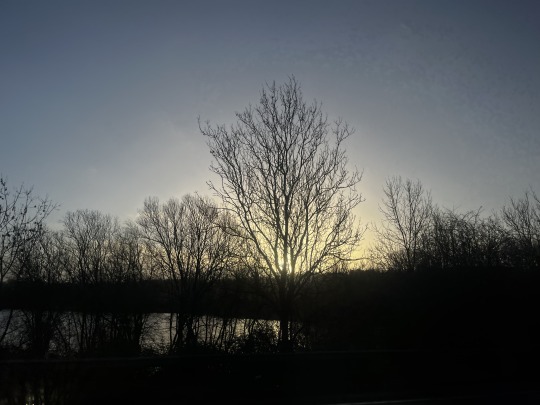
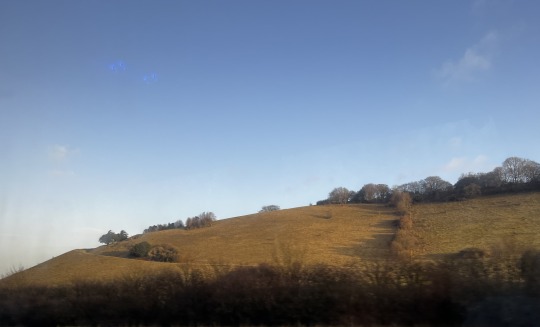
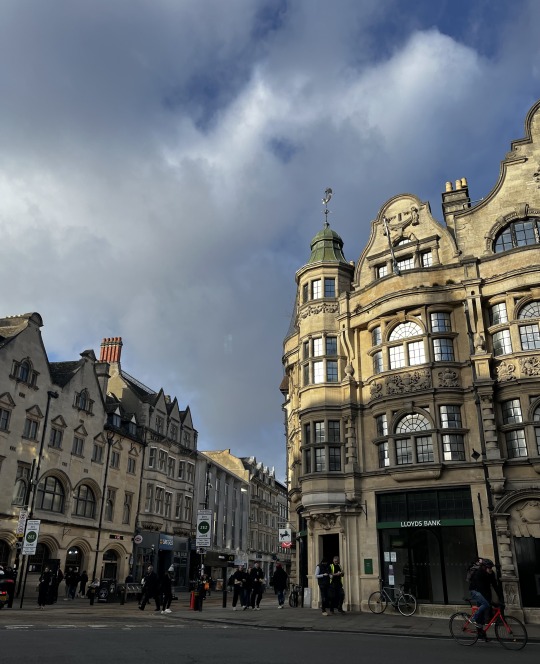

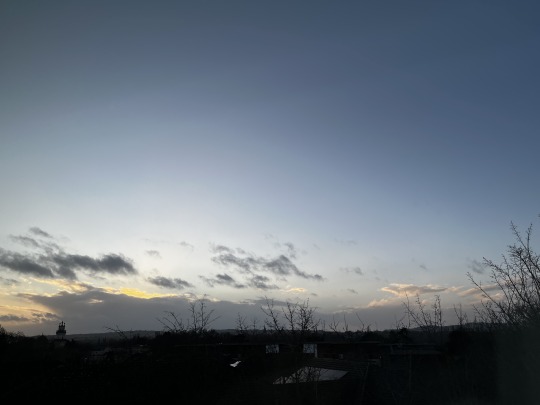

Update the First
My escapades began thusly: after a dragging 8hr flight to Kuala Lumpur, a brief 3hr layover, and a gruelling 13hr connecting flight to Heathrow that I’m sure would be excessively dull to read about, and equally uninspiring for myself to recall and write, I arrived in London at 5:30am on a luxuriously generous 2 hours of sleep, caught the coach to Oxford through the unfoliaged deciduous countryside, and after visiting four different uni offices, off-roading my 40 kilos of luggage through muddy construction detours, cracked pavement, and gravel, I finally arrived at my Oxonian home.
The building shares its name with the elm tree, of the genus ulmus, which, for those unaware folk, are the superior most trees in the kingdom of plantae. I am in a flat with seven other international human females that hail from the countries of France, Canada, the United States, Germany and Brisbane. I’ve been allocated a well-facilitated room - plenty of storage space, a double bed, a full-length mirror, lamps, a desk and chair, a heater and an ensuite. But the crème de la crème is the view — my window looks out upon the north-west — with a clear vantage of some of the renowned spires of Oxford. It’ll afford me both good-quality lighting for my painting, as well as boundless inspiration thereon.
Heretofore my room has been strewn with my belongings - the poor things have endured international travel, only to be neglected upon the floor, but my pitiable intoxicated-by-sleep-deprivation self had been dizzy and shaky all day, waltzing around campus and into town to grab the basic necessities that were needed to eat and to sleep last night. I’m afraid all the lovely other exchange students will be thinking me quite hyperactive and delirious as of this point, since my primary sustenance heretofore has been adrenaline and cold wind. Thankfully, a full 12-hour night of unconsciousness seems to have amended most of my insanity, and a hearty breakfast of bread, lettuce and coleslaw has energised me enough to be ready for a quest or two today. I am excited to birdwatch and explore the locale et cetera, and to learn some more about all the British botanicals everywhere. I’ve also got plenty of administrative tasks and organisation to get done, but I’ll be sure to bless you with only the less tedious information. I will see you all anon.
10 notes
·
View notes
Text
A greeting of sorts
Salutations, my precious Victorians. I have constructed this bloggish forum to keep the masses informed on my movements and mathoms in the motherland of England. I am unaware whether you actually have to make an account to post questions, but do please inquire of my adventures, because I like to feel interesting and also it’s always nice to know that Australia still exists. My recount of my arrival and initial impressions, I shall publish anon.
6 notes
·
View notes